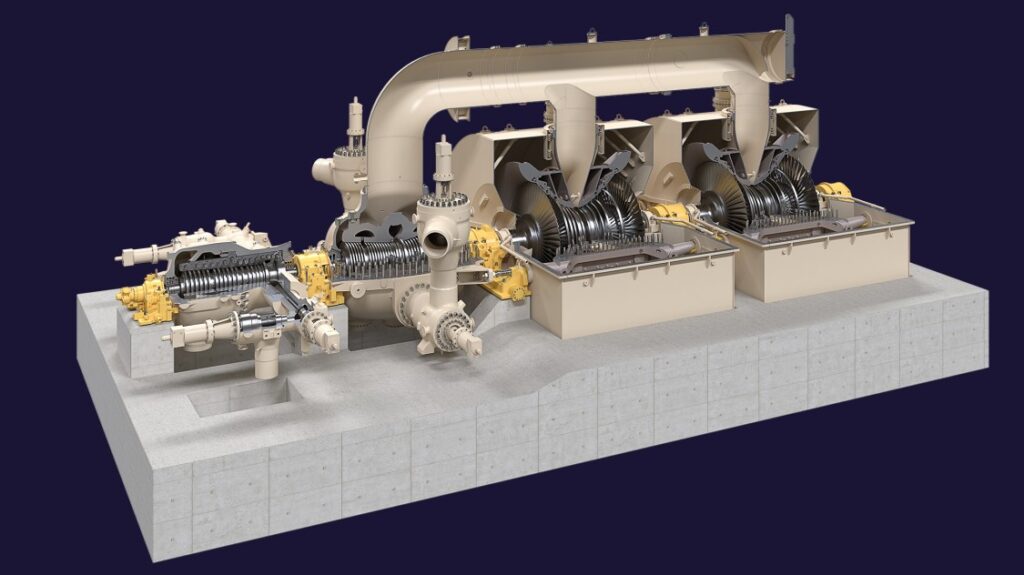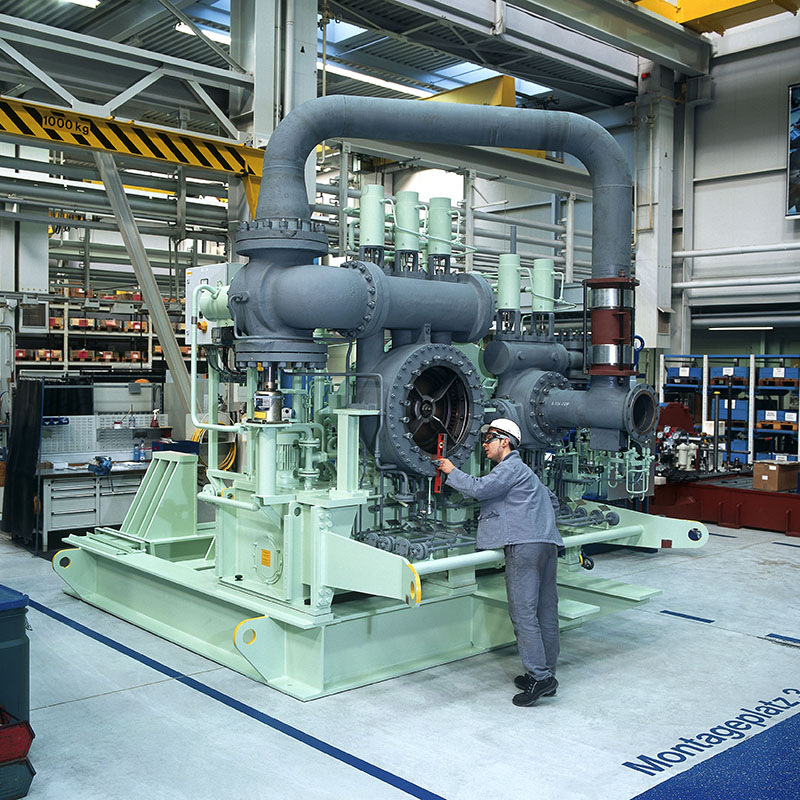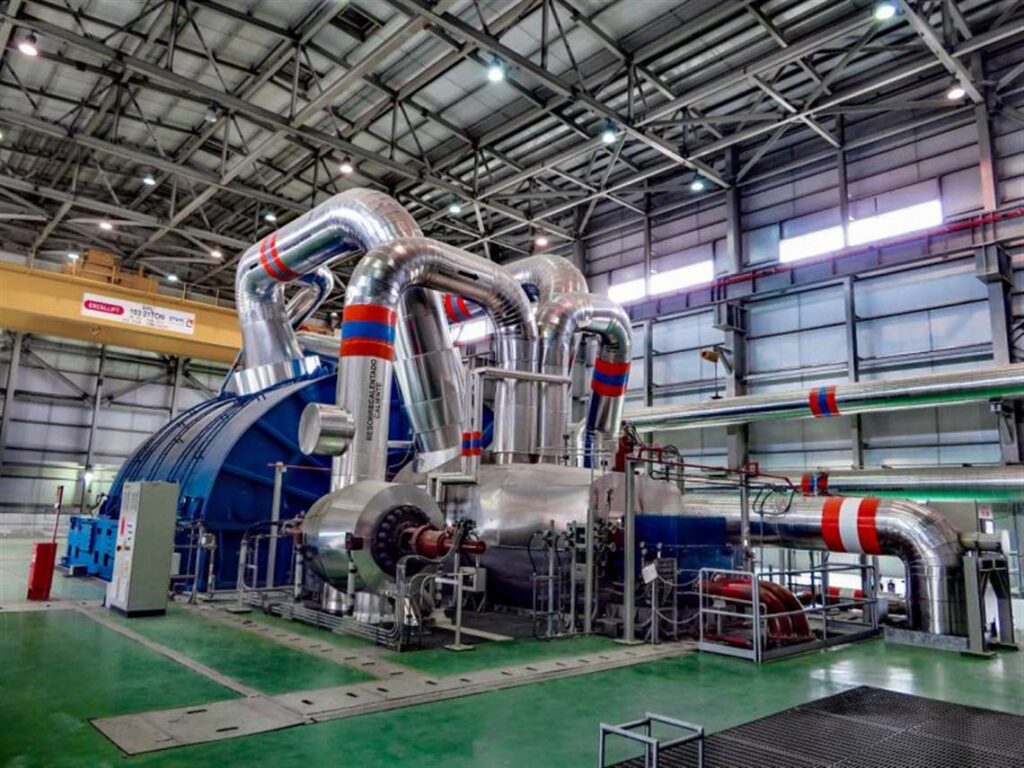MODULARIZATION CONCEPTS IN SPECIAL STEAM TURBINES

ADVANTAGES & DISADVANTAGES IN MODULARIZATION
Advantages of Modularization Concepts in Engineering & Design for Special Purpose Steam Turbines:
Improved Reliability: Modularization allows for standardized components and assemblies, leading to increased reliability through repeatable manufacturing processes and reduced risk of errors or inconsistencies.
Enhanced Availability: Modular designs enable faster maintenance and repair activities by allowing for easy replacement of malfunctioning modules. This reduces downtime and improves the availability of steam turbines in industrial plants.
Simplified Maintenance: Modular components can be easily accessed, inspected, and replaced, simplifying maintenance procedures. This reduces the time and effort required for maintenance activities, improving overall maintainability.
Increased Safety: Modularization promotes the use of standardized safety features and designs. It allows for better integration of safety systems, such as automatic shut-off valves or pressure relief mechanisms, improving the overall safety of steam turbine operations.
Environmental Risk Mitigation: Modularization can facilitate the integration of environmental protection measures, such as emission control systems or waste heat recovery units. This helps reduce environmental risks associated with power generation, oil, and gas industries.
Scalability and Flexibility: Modular designs offer the flexibility to scale up or down the steam turbine capacity by adding or removing modules as per the specific needs of industrial plants or new projects. This enables efficient adaptation to changing demands.
Disadvantages of Modularization Concepts in Engineering & Design for Special Purpose Steam Turbines:
Higher Initial Costs: The development and implementation of modular designs may incur higher initial costs due to the need for standardization, additional engineering efforts, and specialized manufacturing processes.
Limited Customization: Modularization may limit the level of customization available for specific project requirements. This can be a challenge when dealing with unique or complex applications that require tailored solutions.
Design Constraints: Modular designs need to consider the limitations of module sizes, shapes, and interconnections. These constraints may affect the overall turbine performance and efficiency compared to fully customized designs.
Increased Complexity: Managing and integrating multiple modules within a steam turbine system can introduce additional complexity in terms of control systems, interfaces, and compatibility. This complexity may require additional engineering expertise and monitoring.
Dependency on Module Availability: The reliance on specific modules for operation and maintenance means that the availability and lead times of these modules become critical. Any delays or shortages in module availability can impact turbine performance and overall availability.
Interoperability Challenges: Compatibility and interoperability between different modules from various suppliers may present challenges in terms of system integration and standardization. It requires careful coordination and communication between stakeholders.
To mitigate the disadvantages and maximize the benefits of modularization concepts, it is essential to conduct thorough engineering studies, collaborate closely with module suppliers, and ensure robust quality control throughout the manufacturing and installation processes. Careful consideration should be given to project requirements, customization needs, and long-term maintenance strategies to strike the right balance between modular design advantages and potential limitations.
LIMITATIONS ABOUT MODULARIZATION CONCEPTS IN STEAM TURBINES
Limitations of Modularization Concepts in Engineering & Design for Special Purpose Steam Turbines:
Standardization Constraints: Modularization often requires the standardization of components and designs. While this promotes reliability and ease of maintenance, it can limit the ability to customize the turbine for specific applications or unique project requirements.
Limited Flexibility: Modular designs are typically pre-determined and may not easily accommodate changes or upgrades once the turbine is installed. Modifications to the turbine may require additional modules or complex retrofitting, leading to increased costs and downtime.
Compatibility Issues: Integration and compatibility between modules from different suppliers can be challenging. Variations in dimensions, interfaces, and control systems may require additional efforts to ensure seamless interoperability, potentially resulting in delays or operational issues.
Higher Initial Costs: Implementing a modular design may involve higher upfront costs due to the need for standardized components, specialized manufacturing processes, and increased engineering efforts to ensure module compatibility and integration.
Dependence on Module Suppliers: Modularization requires reliance on module suppliers for timely delivery, availability, and ongoing support. Any disruptions in the supply chain or changes in module availability can impact turbine operations, maintenance, and overall system performance.
The complexity of System Integration: Integrating multiple modules into a cohesive system can introduce complexities in terms of control systems, interfaces, and interconnections. Proper coordination and communication between different modules are essential to ensure seamless operation and avoid potential performance issues.
Maintenance and Repair Challenges: While modularization can simplify maintenance procedures, it may also introduce challenges in terms of identifying and isolating faults within specific modules. Diagnosis and repair activities may require specialized expertise and increased coordination among different maintenance teams.
Limited Scalability: Modular designs may have limitations when it comes to scaling up or down the turbine capacity. The availability and compatibility of additional modules needed for capacity changes may pose challenges, potentially limiting the scalability of the turbine system.
To address these limitations, careful planning and evaluation of project requirements, thorough coordination with module suppliers, and robust quality control processes are necessary. Additionally, comprehensive documentation, standardized interfaces, and well-defined procedures for module installation, maintenance, and replacement can help mitigate the challenges associated with modularization in special-purpose steam turbines.

WHY, WHEN, WHERE, WHAT, WHICH, HOW ABOUT MODULARIZING STEAM TURBINES
Modularizing special purpose steam turbines offers several benefits in terms of improving reliability, availability, maintainability, and safety factors while minimizing environmental risks and critical failures. Let’s explore the details:
Why Modularize Special Purpose Steam Turbines:
Improved Reliability: Modularization allows for standardized designs and components, which can enhance reliability by reducing variations and potential failure points. Each module can be individually tested and validated, ensuring better overall system performance.
Enhanced Availability: With a modular approach, maintenance and repairs can be performed on individual modules without impacting the entire turbine system. This enables faster turnaround times, reducing downtime and improving overall availability.
Increased Maintainability: Modular designs simplify maintenance procedures by allowing for easy access to individual components or modules. This facilitates faster troubleshooting, repair, and replacement, minimizing maintenance duration and improving overall maintainability.
Heightened Safety Factors: Modularization can contribute to improved safety by isolating potential hazards to specific modules. It enables targeted safety measures, such as redundancy and isolation systems, to be implemented more effectively.
Mitigation of Environmental Risks: Modular designs can incorporate environmentally friendly features such as advanced emission control systems or more efficient cooling mechanisms. These measures help reduce the environmental impact associated with power generation processes.
When and Where to Implement Modularization:
Large-Scale Industrial Plants: Modularization is particularly beneficial in large-scale industrial plants where multiple steam turbines are employed. The standardized design and simplified maintenance procedures enable efficient management of multiple turbine systems.
New Projects: Implementing modularization from the initial design stage of a new project allows for seamless integration of modules and optimization of the overall turbine system. It ensures better coordination among various stakeholders and suppliers involved in the project.
What and Which Modules to Include:
Standardized Components: Modularization involves using standardized components that can be easily replicated across multiple turbines. This promotes consistency and simplifies procurement, installation, and maintenance processes.
Control Systems: Implementing modular control systems enables efficient monitoring and control of individual modules, allowing for optimized performance and coordination.
Safety Systems: Incorporating dedicated safety modules ensures reliable safety measures, such as overpressure protection, temperature monitoring, and emergency shutdowns.
How to Implement Modularization:
Standardized Interfaces: Well-defined and standardized interfaces between modules enable seamless integration and interconnectivity, ensuring smooth operation and communication.
Rigorous Testing and Validation: Each module should undergo rigorous testing and validation to ensure its individual functionality and compatibility within the overall turbine system.
Effective Documentation: Comprehensive documentation, including assembly procedures, maintenance manuals, and troubleshooting guides, should be provided to facilitate proper installation, operation, and maintenance of modular turbines.
Collaboration with Suppliers: Close collaboration with module suppliers is crucial to ensure reliable and timely delivery of modules, as well as ongoing support and availability of spare parts.
Training and Expertise: Proper training of personnel involved in the installation, operation, and maintenance of modular turbines is essential to ensure efficient and safe handling of the equipment.
Overall, modularizing special purpose steam turbines requires careful planning, collaboration, and attention to detail. By following these practices, the benefits of improved reliability, availability, maintainability, safety factors, and reduced environmental risks can be realized in power generation, oil, and gas industries.

PROCEDURES, ACTIONS, STUDIES, MITIGATION, RECOMMENDATIONS ABOUT MODULARIZATION CONCEPT IN STEAM TURBINES
Modularizing special-purpose steam turbines requires careful planning, implementation of specific procedures and actions, conducting relevant studies, mitigating potential challenges, and following recommendations. Here are some key considerations:
- Planning and Design:
- Conduct a feasibility study to assess the suitability of modularization for the specific application and project requirements.
- Define the scope and boundaries of the modular design, considering factors such as size, capacity, and expected operational conditions.
- Determine the appropriate level of modularization, considering the specific components and subsystems that can be effectively modularized.
- Collaborate with experts, engineers, and suppliers to develop a detailed modular design plan that meets the desired goals.
- Component Standardization and Interfaces:
- Identify components that can be standardized across modules to simplify manufacturing, procurement, and maintenance processes.
- Establish clear and well-defined interfaces between modules to ensure seamless integration and interconnectivity.
- Develop protocols and guidelines for module-to-module communication and control system integration.
- Testing and Validation:
- Conduct thorough testing and validation of each module before integration into the turbine system to ensure proper functionality and compatibility.
- Implement performance testing to verify the performance of the modularized turbine system under different operating conditions.
- Regularly monitor and assess the performance of individual modules and the overall turbine system to identify any issues or deviations.
- Documentation and Training:
- Prepare comprehensive documentation, including assembly procedures, maintenance manuals, and troubleshooting guides, to facilitate proper installation, operation, and maintenance of the modularized turbine system.
- Provide training and support to personnel involved in the installation, operation, and maintenance of the modularized steam turbines.
- Ensure that all stakeholders have access to relevant documentation and are trained on the proper handling and maintenance of the modular system.
- Supply Chain and Collaboration:
- Establish strong collaboration with suppliers to ensure the availability of standardized components and timely delivery of modules.
- Maintain a robust supply chain management system to manage the procurement and delivery of modules and spare parts.
- Regularly assess the performance of module suppliers and make necessary adjustments to ensure quality and reliability.
- Mitigation and Risk Management:
- Identify potential risks and challenges associated with modularization and develop mitigation strategies to address them.
- Implement redundancy and safety measures to minimize the impact of module failures and critical failures.
- Conduct regular inspections, maintenance, and condition monitoring of modules to identify potential issues and proactively address them.
- Continuous Improvement and Optimization:
- Collect and analyze data on module performance, reliability, and maintenance requirements to identify areas for improvement.
- Seek feedback from operators and maintenance personnel to incorporate lessons learned into future modular designs.
- Continuously optimize the modular design and implementation processes based on industry advancements and best practices.
By following these procedures, actions, conducting relevant studies, mitigating potential challenges, and implementing recommendations, the reliability, availability, maintainability, and safety factors of modularized special-purpose steam turbines can be improved. Additionally, environmental risks and critical failures can be minimized, leading to enhanced performance and reduced downtime in power generation, oil, and gas industries.
